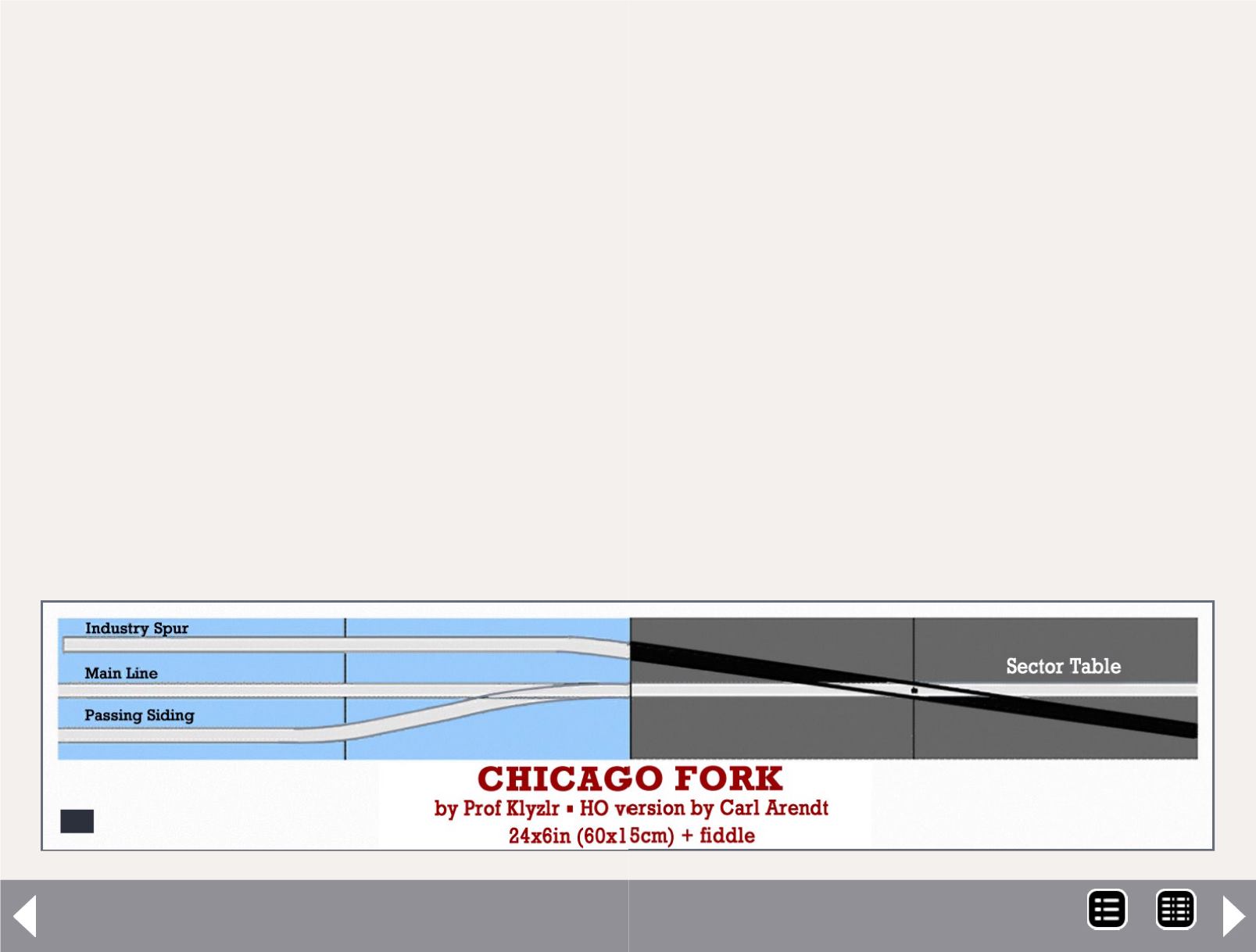
Inglenook track arrangement can be operated in simple play
mode, where the order of the cars and switching is guided
by any simple random-draw system. Or a prototypical switch
list or car spot sheet can simulate the real-life cellphone con-
versation between a local switch crew and the industry dock
manager. The simplicity of the Inglenook configuration also
significantly helps keep the budget under control.
While I personally prefer to switch with an SW1500, the HO
version Chicago Fork is equipped with rolling stock duplicating
that on its larger O scale predecessor. An Atlas CB&Q DCC-ready
GP38, a CB&Q caboose, and handful of cars are the starting
stock on this project. The contest budget needs to be carefully
watched here. The difference between MSRP and eBay prices for
the same roster of equipment can be significant!
Splurging on one DCC sound-equipped loco could immediately
decimate an already tight budget. It’s interesting to note that
opting for kit rolling stock may or may not represent a sav-
ings when compared to inexpensive RTR options. However, for
the dollars, a good-quality kit such as those by Tichy and Red
MRH $500 Contest - 2
3a
Caboose represent a greater opportunity for learning modeling
skills than its equivalent RTR car.
Benchwork
Some modelers love to build it, some will do anything pos-
sible to minimize the pain. In Chicago's case, 5mm foamcore
has been used to create a monocoque structure. The module
is super-light, yet more than strong enough to handle regular
movement in a home setting.
Building benchwork is often written off as a noisy, dusty, messy
process, which is all but impossible in the average apartment.
Using foamcore, I constructed Chicago in one sleepless night,
without waking my wife or any of the neighbors. I achieved this
easily using quiet-operation modeling tools, which most model-
ers will likely already own. You might need to stock up on X-Acto
blades, though.
Design
The module design includes an integrated coved backdrop/
ceiling, benchwork fascias, and lighting system. This cameo
scene can be appreciated in its best light under any conditions.
MRH-Sep 2013


